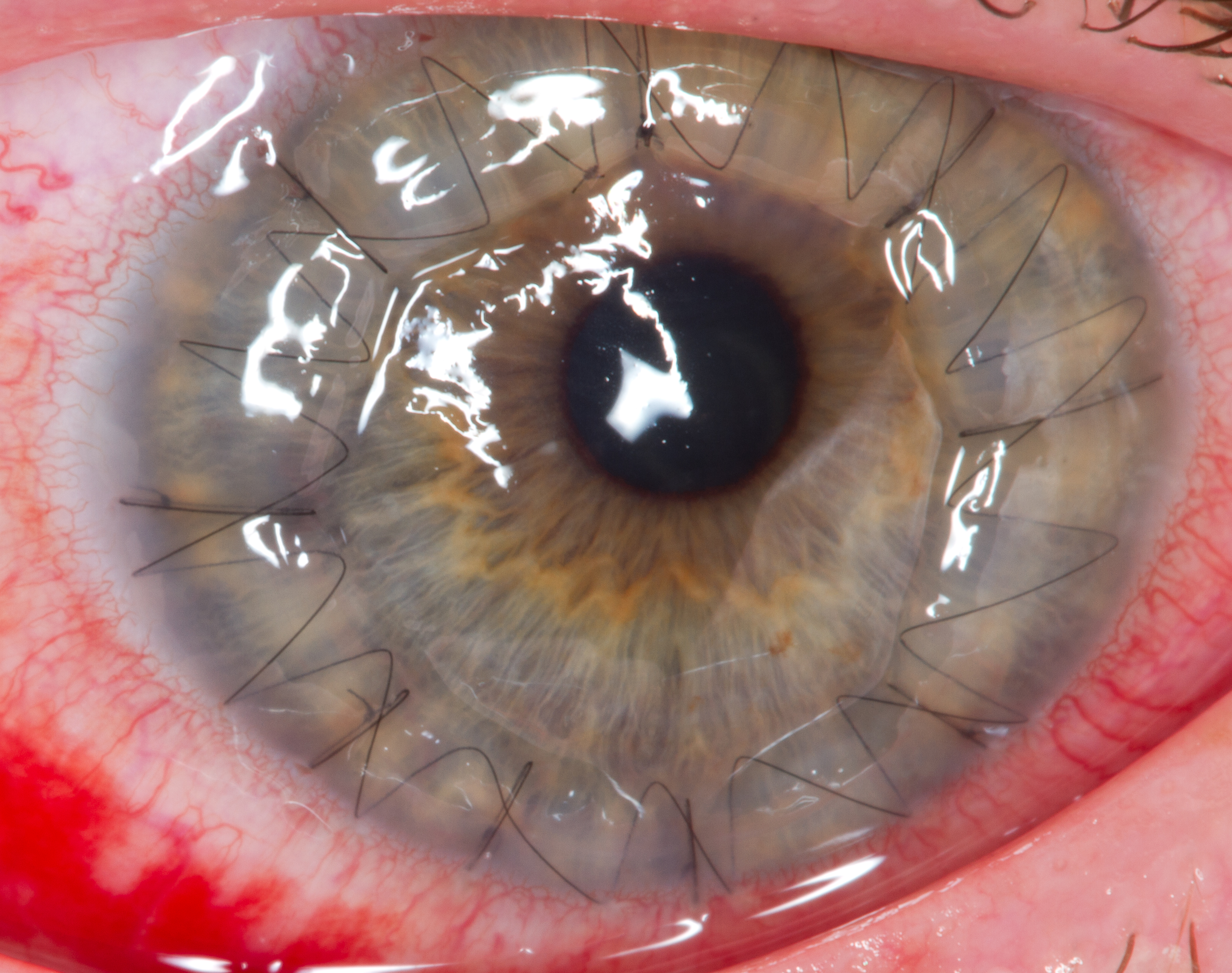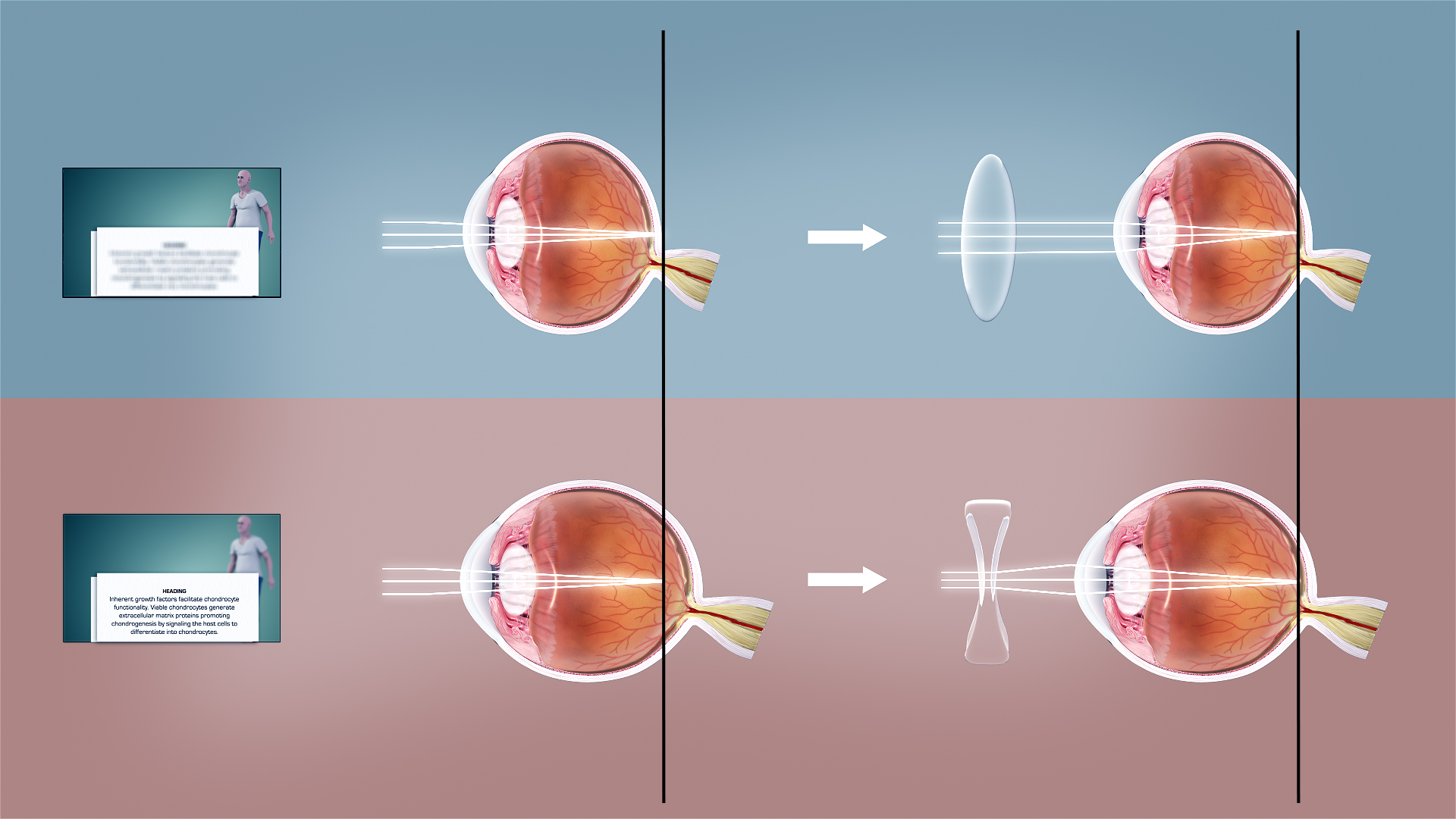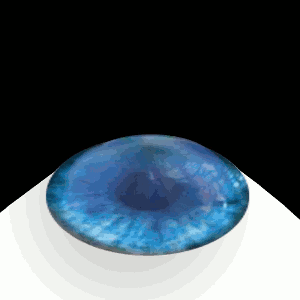|
Corneal Ectasia
Corneal ectatic disorders or corneal ectasia are a group of uncommon, noninflammatory, eye disorders characterised by bilateral thinning of the central, paracentral, or peripheral cornea. Types * Keratoconus, a progressive, noninflammatory, bilateral, asymmetric disease, characterized by paraxial stromal thinning and weakening that leads to corneal surface distortion. * Keratoglobus, a rare noninflammatory corneal thinning disorder, characterised by generalised thinning and globular protrusion of the cornea. * Pellucid marginal degeneration, a bilateral, noninflammatory disorder, characterized by a peripheral band of thinning of the inferior cornea. *Posterior keratoconus, a rare condition, usually congenital, which causes a nonprogressive thinning of the inner surface of the cornea, while the curvature of the anterior surface remains normal. Usually only a single eye is affected. * Post-LASIK ectasia, a complication of LASIK eye surgery. * Terrien's marginal degeneration, a painless ... [...More Info...] [...Related Items...] OR: [Wikipedia] [Google] [Baidu] |
Eye Disorders
Eyes are organs of the visual system. They provide living organisms with vision, the ability to receive and process visual detail, as well as enabling several photo response functions that are independent of vision. Eyes detect light and convert it into electro-chemical impulses in neurons (neurones). In higher organisms, the eye is a complex optical system which collects light from the surrounding environment, regulates its intensity through a diaphragm, focuses it through an adjustable assembly of lenses to form an image, converts this image into a set of electrical signals, and transmits these signals to the brain through complex neural pathways that connect the eye via the optic nerve to the visual cortex and other areas of the brain. Eyes with resolving power have come in ten fundamentally different forms, and 96% of animal species possess a complex optical system. Image-resolving eyes are present in molluscs, chordates and arthropods. The most simple eyes, pit eyes, are ... [...More Info...] [...Related Items...] OR: [Wikipedia] [Google] [Baidu] |
Terrien's Marginal Degeneration
Terrien marginal degeneration is a noninflammatory, unilateral or asymmetrically bilateral, slowly progressive thinning of the peripheral corneal stroma. Cause The cause of Terrien marginal degeneration is unknown, its prevalence is roughly equal between males and females, and it usually occurs in the second or third decade of life. Diagnosis Treatments Spectacles or RGP contact lenses can be used to manage the astigmatism Astigmatism is a type of refractive error due to rotational asymmetry in the eye's refractive power. This results in distorted or blurred vision at any distance. Other symptoms can include eyestrain, headaches, and trouble driving at nig .... when the condition worsens, surgical correction may be required. References External links Disorders of sclera and cornea Eye diseases {{eye-disease-stub ... [...More Info...] [...Related Items...] OR: [Wikipedia] [Google] [Baidu] |
Corneal Transplant
Corneal transplantation, also known as corneal grafting, is a surgical procedure where a damaged or diseased cornea is replaced by donated corneal tissue (the graft). When the entire cornea is replaced it is known as penetrating keratoplasty and when only part of the cornea is replaced it is known as lamellar keratoplasty. Keratoplasty simply means surgery to the cornea. The graft is taken from a recently deceased individual with no known diseases or other factors that may affect the chance of survival of the donated tissue or the health of the recipient. The cornea is the transparent front part of the eye that covers the iris, pupil and anterior chamber. The surgical procedure is performed by ophthalmologists, physicians who specialize in eyes, and is often done on an outpatient basis. Donors can be of any age, as is shown in the case of Janis Babson, who donated her eyes after dying at the age of 10. Corneal transplantation is performed when medicines, keratoconus conserva ... [...More Info...] [...Related Items...] OR: [Wikipedia] [Google] [Baidu] |
Corneal Collagen Cross-linking
Corneal cross-linking (CXL) with riboflavin (vitamin B2) and UV-A light is a surgical treatment for corneal ectasia such as keratoconus, PMD, and post-LASIK ectasia. It is used in an attempt to make the cornea stronger. According to a 2015 Cochrane review, there is insufficient evidence to determine if it is useful in keratoconus. In 2016, the US Food and Drug Administration approved riboflavin ophthalmic solution crosslinking based on three 12-month clinical trials. Medical uses A 2015 Cochrane review found that the evidence on corneal cross-linking was insufficient to determine if it is an effective procedure for the treatment of keratoconus. Adverse effects Among those with keratoconus who worsen CXL may be used. In this group, the most common side effects are haziness of the cornea, punctate keratitis, corneal striae, corneal epithelium defect, and eye pain. In those who use it after post-LASIK ectasia, the most common side effects are haziness of the cornea, corn ... [...More Info...] [...Related Items...] OR: [Wikipedia] [Google] [Baidu] |
Refractive Errors
Refractive error, also known as refraction error, is a problem with focusing light accurately on the retina due to the shape of the eye and or cornea. The most common types of refractive error are near-sightedness, far-sightedness, astigmatism, and presbyopia. Near-sightedness results in far away objects being blurry, far-sightedness and presbyopia result in close objects being blurry, and astigmatism causes objects to appear stretched out or blurry. Other symptoms may include double vision, headaches, and eye strain. Near-sightedness is due to the length of the eyeball being too long, far-sightedness the eyeball too short, astigmatism the cornea being the wrong shape, and presbyopia aging of the lens of the eye such that it cannot change shape sufficiently. Some refractive errors occur more often among those whose parents are affected. Diagnosis is by eye examination. Refractive errors are corrected with eyeglasses, contact lenses, or surgery. Eyeglasses are the easiest and ... [...More Info...] [...Related Items...] OR: [Wikipedia] [Google] [Baidu] |
Intrastromal Corneal Ring Segments
An intrastromal corneal ring segment (ICRS) (also known as intrastromal corneal ring, corneal implant or corneal insert) is a small device implanted in the eye to correct vision. The procedure involves an ophthalmologist who makes a small incision in the cornea of the eye and inserts two crescent or semi-circular shaped ring segments between the layers of the corneal stroma, one on each side of the pupil. The embedding of the two rings in the cornea is intended to flatten the cornea and change the refraction of light passing through the cornea on its way into the eye. __TOC__ Design Intrastromal corneal ring segments have many different types and designs, including Intacs (US), Cornealring (Brazil), Keraring (Brazil), Ferrara ring (Brazil), Myoring (Austria) and Intraseg (UK). Medical uses Intrastromal corneal rings were originally used to treat mild myopia. For this purpose, they have largely been superseded by excimer lasers, which have better accuracy. They are now mostly used ... [...More Info...] [...Related Items...] OR: [Wikipedia] [Google] [Baidu] |
Contact Lenses
Contact lenses, or simply contacts, are thin lenses placed directly on the surface of the eyes. Contact lenses are ocular prosthetic devices used by over 150 million people worldwide, and they can be worn to correct vision or for cosmetic or therapeutic reasons. In 2010, the worldwide market for contact lenses was estimated at $6.1 billion, while the US soft lens market was estimated at $2.1 billion.Nichols, Jason J., et a"ANNUAL REPORT: Contact Lenses 2010" January 2011. Multiple analysts estimated that the global market for contact lenses would reach $11.7 billion by 2015. , the average age of contact lens wearers globally was 31 years old, and two-thirds of wearers were female.Morgan, Philip B., et al"International Contact Lens Prescribing in 2010" ''Contact Lens Spectrum''. October 2011. People choose to wear contact lenses for many reasons. Aesthetics and cosmetics are main motivating factors for people who want to avoid wearing glasses or to change the appearance or c ... [...More Info...] [...Related Items...] OR: [Wikipedia] [Google] [Baidu] |
Corneal Stroma
The stroma of the cornea (or substantia propria) is a fibrous, tough, unyielding, perfectly transparent and the thickest layer of the cornea of the eye. It is between Bowman's membrane anteriorly, and Descemet's membrane posteriorly. At its centre, human corneal stroma is composed of about 200 flattened ''lamellæ'' (layers of collagen fibrils), superimposed one on another. They are each about 1.5-2.5 μm in thickness. The anterior lamellæ interweave more than posterior lamellæ. The fibrils of each lamella are parallel with one another, but at different angles to those of adjacent lamellæ. The lamellæ are produced by keratocytes (corneal connective tissue cells), which occupy about 10% of the substantia propria. Apart from the cells, the major non-aqueous constituents of the stroma are collagen fibrils and proteoglycans. The collagen fibrils are made of a mixture of type I and type V collagens. These molecules are tilted by about 15 degrees to the fibril axis, and becaus ... [...More Info...] [...Related Items...] OR: [Wikipedia] [Google] [Baidu] |
LASIK
LASIK or Lasik (''laser-assisted in situ keratomileusis''), commonly referred to as laser eye surgery or laser vision correction, is a type of refractive surgery for the correction of myopia, hyperopia, and an actual cure for astigmatism, since it is in the cornea. LASIK surgery is performed by an ophthalmologist who uses a laser or microkeratome to reshape the eye's cornea in order to improve visual acuity. For most people, LASIK provides a long-lasting alternative to eyeglasses or contact lenses. LASIK is very similar to another surgical corrective procedure, photorefractive keratectomy (PRK), and LASEK. All represent advances over radial keratotomy in the surgical treatment of refractive errors of vision. For patients with moderate to high myopia or thin corneas which cannot be treated with LASIK and PRK, the phakic intraocular lens is an alternative. As of 2018, roughly 9.5 million Americans have had LASIK and, globally, between 1991 and 2016, more than 40 million proced ... [...More Info...] [...Related Items...] OR: [Wikipedia] [Google] [Baidu] |
Cornea
The cornea is the transparent front part of the eye that covers the iris, pupil, and anterior chamber. Along with the anterior chamber and lens, the cornea refracts light, accounting for approximately two-thirds of the eye's total optical power. In humans, the refractive power of the cornea is approximately 43 dioptres. The cornea can be reshaped by surgical procedures such as LASIK. While the cornea contributes most of the eye's focusing power, its focus is fixed. Accommodation (the refocusing of light to better view near objects) is accomplished by changing the geometry of the lens. Medical terms related to the cornea often start with the prefix "'' kerat-''" from the Greek word κέρας, ''horn''. Structure The cornea has unmyelinated nerve endings sensitive to touch, temperature and chemicals; a touch of the cornea causes an involuntary reflex to close the eyelid. Because transparency is of prime importance, the healthy cornea does not have or need blood vessels with ... [...More Info...] [...Related Items...] OR: [Wikipedia] [Google] [Baidu] |
Post-LASIK Ectasia
Post-LASIK ectasia is a condition similar to keratoconus where the cornea starts to bulge forwards at a variable time after LASIK, PRK, or SMILE corneal laser eye surgery. However, the physiological processes of post-LASIK ectasia seem to be different from keratoconus. The visible changes in the basal epithelial cell and anterior and posterior keratocytes linked with keratoconus were not observed in post-LASIK ectasia. __TOC__ Risk factors Before corneal refractive surgery such as LASIK, SMILE, and PRK, people must be examined for possible risk factors such as keratoconus. Abnormal corneal topography compromises of keratoconus, pellucid marginal degeneration, or forme fruste keratoconus with an I-S value of 1.4 or more is the most significant risk factor. Low age, low residual stromal bed (RSB) thickness, low preoperative corneal thickness, and high myopia are other important risk factors. Treatments Treatment options include contact lenses Contact lenses, or sim ... [...More Info...] [...Related Items...] OR: [Wikipedia] [Google] [Baidu] |
Medscape
Medscape is a website providing access to medical information for clinicians; the organization also provides continuing education for physicians and health professionals. It references medical journal articles, Continuing Medical Education (CME), a version of the National Library of Medicine's MEDLINE database, medical news, and drug information (Medscape Drug Reference, or MDR). At one time Medscape published seven electronic peer reviewed journals. History Medscape launched May 22, 1995 by SCP Communications, Inc. under the direction of its CEO Peter Frishauf. In 1999, George D. Lundberg became the editor-in-chief of Medscape. For seventeen years before joining Medscape he had served as Editor of the ''Journal of the American Medical Association''. In September 1999, Medscape, Inc. went public and began trading on NASDAQ under the symbol MSCP. In 2000, Medscape merged with MedicaLogic, Inc., another public company. MedicaLogic filed for bankruptcy within 18 months and sold ... [...More Info...] [...Related Items...] OR: [Wikipedia] [Google] [Baidu] |




